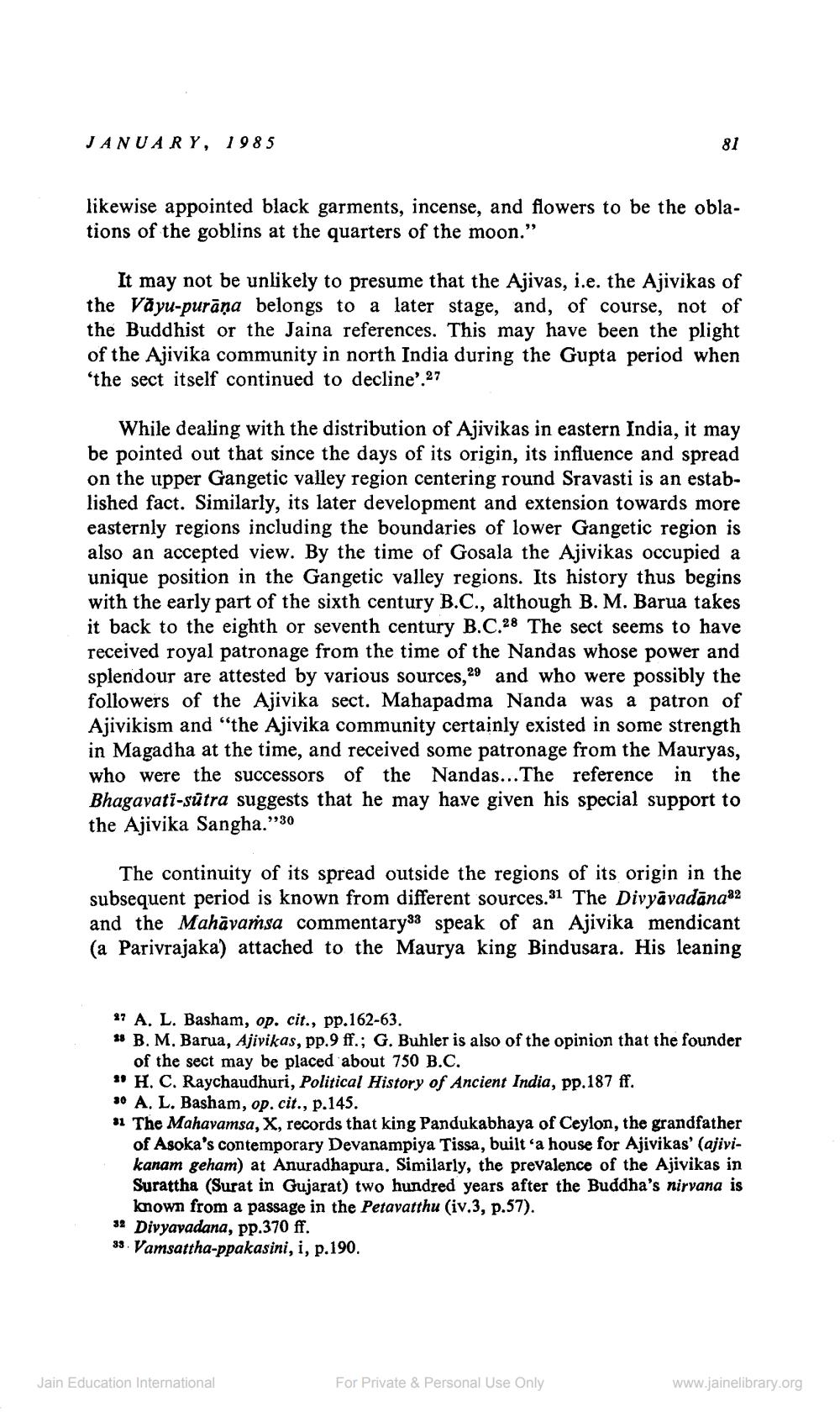________________
JANUARY, 1985
likewise appointed black garments, incense, and flowers to be the oblations of the goblins at the quarters of the moon."
It may not be unlikely to presume that the Ajivas, i.e. the Ajivikas of the Vāyu-purāņa belongs to a later stage, and, of course, not of the Buddhist or the Jaina references. This may have been the plight of the Ajivika community in north India during the Gupta period 'the sect itself continued to decline'.27
While dealing with the distribution of Ajivikas in eastern India, it may be pointed out that since the days of its origin, its influence and spread on the upper Gangetic valley region centering round Sravasti is an established fact. Similarly, its later development and extension towards more easternly regions including the boundaries of lower Gangetic region is also an accepted view. By the time of Gosala the Ajivikas occupied a unique position in the Gangetic valley regions. Its history thus begins with the early part of the sixth century B.C., although B. M. Barua takes it back to the eighth or seventh century B.C.28 The sect seems to have received royal patronage from the time of the Nandas whose power and splendour are attested by various sources, 29 and who were possibly the followers of the Ajivika sect. Mahapadma Nanda was a patron of Ajivikism and "the Ajivika community certainly existed in some strength in Magadha at the time, and received some patronage from the Mauryas, who were the successors of the Nandas... The reference in the Bhagavati-sūtra suggests that he may have given his special support to the Ajivika Sangha."30
The continuity of its spread outside the regions of its origin in the subsequent period is known from different sources.31 The Divyāvadāna82 and the Mahāvaṁsa commentary33 speak of an Ajivika mendicant (a Parivrajaka) attached to the Maurya king Bindusara. His leaning
27 A. L. Basham, op. cit., pp.162-63. 48 B. M. Barua, Ajivikas, pp.9 ff.; G. Buhler is also of the opinion that the founder
of the sect may be placed about 750 B.C. * H. C. Raychaudhuri, Political History of Ancient India, pp.187 ff. 30 A. L. Basham, op. cit., p.145. 11 The Mahavamsa, X, records that king Pandukabhaya of Ceylon, the grandfather
of Asoka's contemporary Devanampiya Tissa, built a house for Ajivikas' (ajivikanam geham) at Anuradhapura. Similarly, the prevalence of the Ajivikas in Surattha (Surat in Gujarat) two hundred years after the Buddha's nirvana is
known from a passage in the Petavatthu (iv.3, p.57). 12 Divyavadana, pp.370 ff. 33. Vamsattha-ppakasini, i, p.190.
Jain Education International
For Private & Personal Use Only
www.jainelibrary.org




